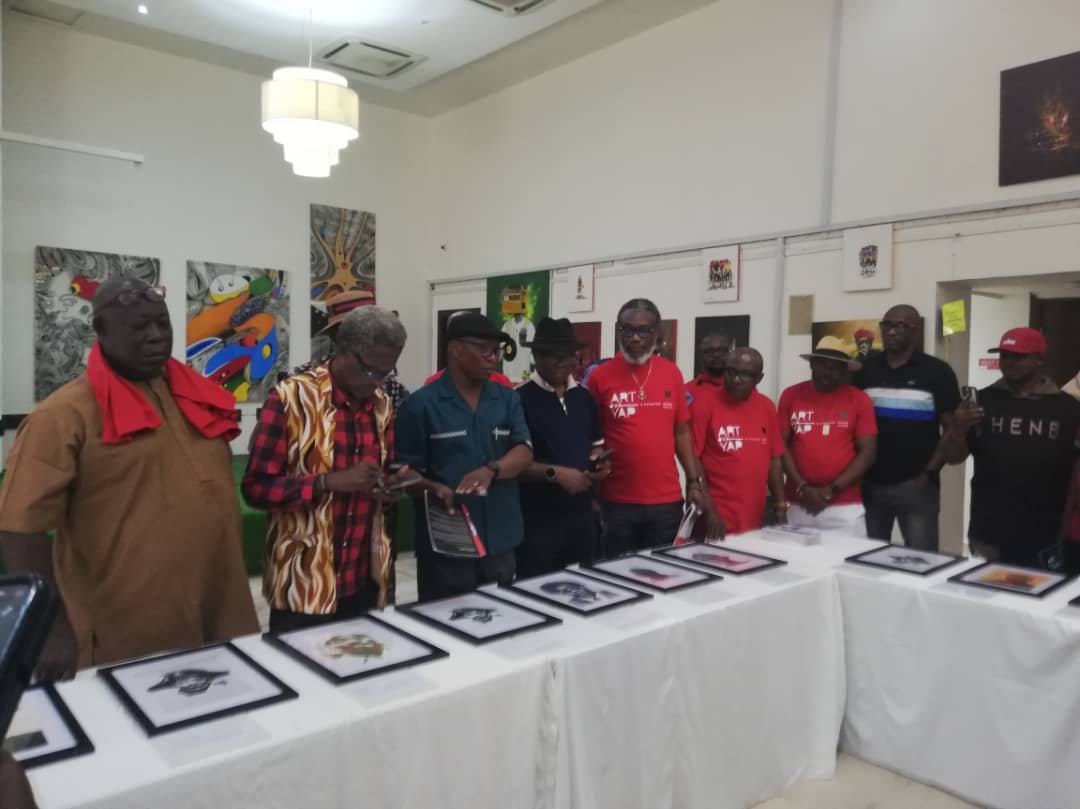Image by Shvan Harki.
“Men never do evil so completely and cheerfully as when they do it from religious conviction.”- Blaise Pascal
Since the fall of Bashar al-Assad’s regime on December 8, religious messages have spread across Syria, beginning at Damascus Airport and extending to university campuses. Courtyards that once featured statues of the late Hafez al-Assad and his successor Bashar have now been transformed into spaces for collective prayers, signaling a significant shift in the country’s political and cultural landscape. This transformation marks the end of an era defined by the secular and nationalist ideals of the Baath Arab Socialist Party, which had championed Arab unity. The new focus has shifted to the Islamic nation, evident in changes such as the removal of the concept of martyrdom from school textbooks—where the martyr was previously defined as someone who dies defending the homeland—and replacing it with the belief that martyrdom is found in the path of God. These developments culminated in the Eid prayers held at the Republican Palace in Damascus on March 31, marking a historic moment as the first prayers ever to take place within the palace in Syrian history. This event sent a powerful message across Syria and the Arab world that secular parties—whether nationalist or Marxist—had come to an end, particularly after their official dissolution, signaling the start of a new Islamic era. Islamic Salafi organizations had arrived in the capital Damascus, which they call the capital of the “land of resurrection,” and established a new regime, with Islamic jurisprudence as the sole foundation for the new constitution. Key ministerial positions in the newly formed government, including those of significant power, were occupied by Hay’at Tahrir al-Sham (HTS, or the “Organization for the Liberation of the Levant”). The prayers held within the palace and its courtyard, attended by hundreds, were hailed as a historic moment and a lasting symbol of this transformative shift. This majestic scene was seen as one that “restored the state’s identity,”1 reaffirming that the ultimate authority lies with the people, faith, and justice. Here, the “people” refers to the Sunni majority, “faith” to the victors’ interpretation of Islam, and “justice” to the exclusive right of the Sunni majority to hold power.
The sight of congregational prayers was not entirely unfamiliar; it had been preceded by mass prayers referred to as “liberation prayers.” These began in the squares of Syrian cities and later transitioned to newly established prayer halls within universities. Before this, the call to prayer had been broadcast at Damascus International Airport,2 signaling to arriving travelers that everything in Syria had irrevocably changed. Those who had once frequented duty-free shops to purchase whiskey or imported wine as gifts or for holidays were now left to recall the shattered remains—the fragments of thousands of bottles of whiskey, wine, arak, vodka, gin, and tequila.3 This act marked a clear declaration that the era of “impurities”—a term used in the sermons of the victors’ mosques to describe the Alawite rulers—had come to an end. Sermons in Syrian mosques rejoiced in the return of power to its rightful owners, the Sunni majority, now supported by a jihadist ideology rooted in Najd.
To fully grasp the roots of the current religiosity in Syria, it is essential to consider its rich and multifaceted historical background. Within the vast expanse of Islam, various sects such as the Alawite, Ismaili, and Druze emerged, each contributing distinct interpretations and practices that shaped the spiritual and cultural fabric of the region. Against this backdrop, the Sufi revolution marked a profound shift, reimagining God not as a distant entity on a celestial throne but as a force deeply embedded in the fabric of existence. One of the luminaries of this movement was the great Sufi poet Al-Hallaj, whose mystical insights were later made accessible to the English-speaking world through the pioneering translation of the esteemed Islamic scholar Carl Ernst.
After spending several years imprisoned, Al-Hallaj endured a brutal execution. He was first flogged and mutilated, then crucified. Ultimately, he was killed by beheading, and his remains were cast into the Euphrates River. Al-Hallaj’s legacy ignited an intellectual revolution within Islamic mysticism, one that transcended its cultural origins. Sufism, both in its historical roots within the Islamic tradition and its modern expressions among Syria’s Sunni majority, has often been perceived as foreign by the those who stick to a strict Wahhabi interpretation of Islam. This austere doctrine, originating in Najd, Saudi Arabia, has increasingly exerted pressure on the more moderate Sunni religious practices in Syria—practices that have historically embraced tolerance for diverse Islamic interpretations.
This tension transcends simple sectarian or doctrinal divisions, reflecting a broader contest between the historically diverse expressions of Sunni religiosity, including Sufism, and the rigid orthodoxy imposed by Wahhabism. This dynamic reveals the complex interplay of theological, cultural, and political forces shaping modern Syrian religiosity. The conflicting parties consist of moderate Sunni Muslims from major cities like Aleppo, Damascus, and Homs, and Sunni Islamic hardliners from the countryside surrounding these cities, influenced by Najdi Wahhabism founded by the religious scholar Muhammad ibn Abd al-Wahhab (1703–1792), and are influenced by the ideas of Sheikh Taqi al-Din Ahmad ibn Taymiyyah (1263–1328), a controversial jurist known as “Sheikh al-Islam,” who was infamous for his hostility toward esoteric sects and Sufism. This was clear in his fatwa against Druze and Alawites, which says, “These Druze and Nusayris are infidels by consensus of Muslims. It is not permissible to eat their slaughtered animals or marry their women.” He goes on to say, “Rather, they are to be killed wherever they are found and cursed, as they have been described. Their scholars and righteous people must be killed so that they do not lead others astray.”4
Armed Wahhabi Syrians have entered mosques, threatening congregants and accusing moderate Syrian clerics in cities such as Aleppo, Hama, and Damascus of innovation (bid’ah)5 for failing to adhere to Wahhabi teachings. In a recent YouTube speech titled “Events at Mus’ab bin Umair Mosque: Forcing Wahhabism—For Whose Benefit?”,6 Sheikh Abdul Qader Muhammad Hussein from Hama warned against efforts to undermine moderate and tolerant Islam by replacing it with a Wahhabi version. He highlighted the arbitrary dismissal of mosque preachers in Aleppo, where accusations of loyalty to the previous regime and deviation from the Quranic text were used to justify their removal. He also noted the distribution of free books promoting religious extremism and cautioned against attempts by armed factions to suppress the majority and alter their religious beliefs. The Sheikh emphasized that Syria’s Sunni majority did not rise against Bashar al-Assad’s regime to embrace Wahhabism. He issued a warning to Syrian president Ahmed al-Sharaa, saying, “We did not remain silent during the era of oppression to now remain silent in the era of freedom.” He delivered a resounding cry against Wahhabi extremists, declaring that interference in the Syrian people’s worship and affairs and the imposition of the Najdi Wahhabi model was utterly unacceptable. He added, “Nor will we accept anything imposed from outside. Ibn Taymiyyah is not the sole authority in Islam. Islam is far greater than Ibn Taymiyyah.”
Religiosity reached its zenith during the era of Hafez al-Assad (1971-2000). The senior Assad established Quran Memorization Institutes and forged strong alliances with Sunni clerics in Damascus, Aleppo, and other major urban centers. Additionally, his regime systematically cultivated and supported extremist networks to facilitate the transfer of fighters and jihadists into Iraq to confront the U.S. military. When the Syrian revolution erupted, Assad deliberately released Islamic extremists from prisons as a calculated move to undermine the uprising against his regime. By enabling their armament and introducing a religious dimension to the rebellion, he created an environment that allowed him to delegitimize and suppress the movement more effectively. Media narratives further reinforced this framing, emphasizing terrorism, the influx of cross-border jihadists, and funding from Qatar, Saudi Arabia, and Turkey, portraying them as part of a coordinated conspiracy against Syria. Both Hafez al-Assad and later his son Bashar were known to pray in Damascus mosques, surrounded by Sunni clerics, a scene repeated every Eid. However, prayer was prohibited in official institutions, the military, workplaces, and public squares, preventing it from becoming a public spectacle, but the prayers in the first day of Eid al-Fitr on March 31 at the Republican Palace sent a clear message that Syria had entered a new era, breaking away from Baathist and leftist culture.
Currently, the victorious armed religious organizations in Syria face no ideological competition and promote the concept of religious Sunni majority in their rhetoric. However, this notion is now being shaken by the challenges posed by the new Wahhabis to Syria’s moderate religious landscape.
There is no doubt that traditional Damascene and Aleppine Islam have begun to feel the threatening presence of a rigid Sunni Wahhabi religious force. This force is united with cross-border religious and missionary elements and jihadists from Libya, Algeria, the Gulf region, China, Russia, Western Europe and the North Caucasus, forming a formidable power among its fighters. This development appears to pose a clear threat to Sunni aristocratic families, who have historically leaned toward a lighter version of Islam, liberalism, and openness throughout Syria’s history. These families were instrumental in bringing Hafez al-Assad to power through their alliance with him.
This version of Islam as practiced by its early forebears (salaf) is driven by ideologically rigid soldiers now spreading across Syria, particularly in the coastal regions, Homs, and Misyaf where the Alawite minority resides. The Syrian Network for Human Rights documented the killing of 12 civilians, including five children and one woman, in two separate massacres on March 30 and 31, 2025. These incidents took place in the Karm al-Zaytoun neighborhood of Homs city and the village of Harf Banimra, near the city of Baniyas. The perpetrators of both attacks were members of military and security formations operating under the Ministries of Defense and Interior in the Syrian transitional government. According to the Wahhabi doctrine, the victims were branded as heretics and deviants, deemed unworthy of representing true Islam.
Inspired by the ideological legacy of Ibn Taymiyyah, the newly emerging forces exhibit an unsettling zeal, driven by his teachings.7 Across Syria’s coastal region, a considerable number of fighters influenced by these doctrines claim to be maintaining order and targeting Assad’s regime remnants. Meanwhile, Alawite communities endure severe hardships as the government imposes sieges, displaces families from their homes, and systematically fires individuals from their positions within state institutions. Although officially described as isolated incidents, these atrocities have instilled widespread fear, with many believing they may have received tacit approval. If not addressed, these radical elements pose a significant threat to Syria’s unity, exposing the nation to forces intent on division and destabilization. This peril raises the possibility of redrawing the Sykes-Picot map, serving the interests of those striving for regional dominance through fragmentation.
Notes
1.
2.
3.
4. Ibn Taymiyyah, Majmoo’ al-Fatawa, Vol. 35, King Fahd Complex for the Printing of the Holy Qur’an, Saudi Arabia, 2004.
5. In Islamic theology, “innovation” (bid’ah) refers to introducing something new into religious practice that has no basis in the Quran or Sunnah.
6.
7. A video posted by the Syrian Observatory for Human Rights shows a Syrian Wahhabi militant declaring that all Alawites must be slaughtered, accusing them of crimes against the Prophet Mohammed’s nation. The recording can be accessed here: [
© Counter Punch









